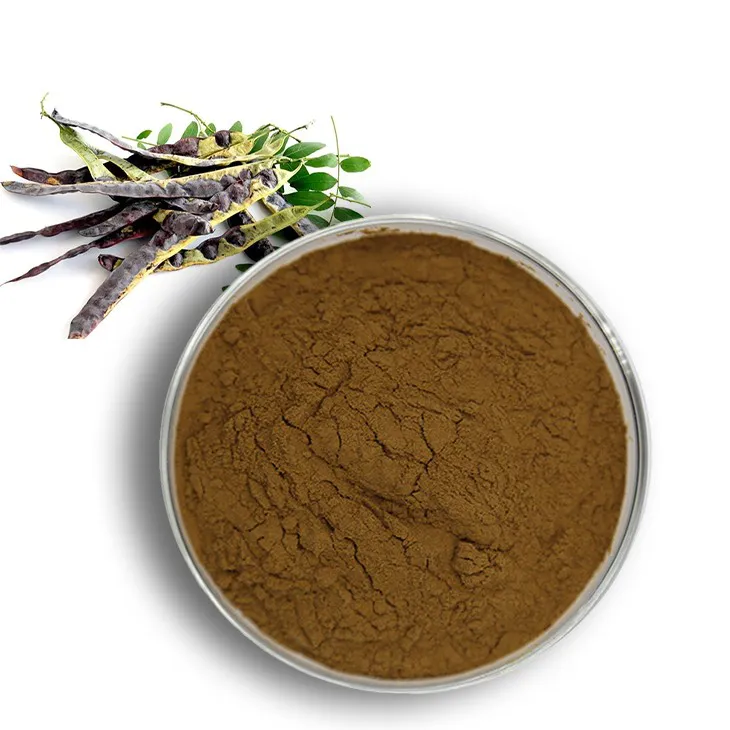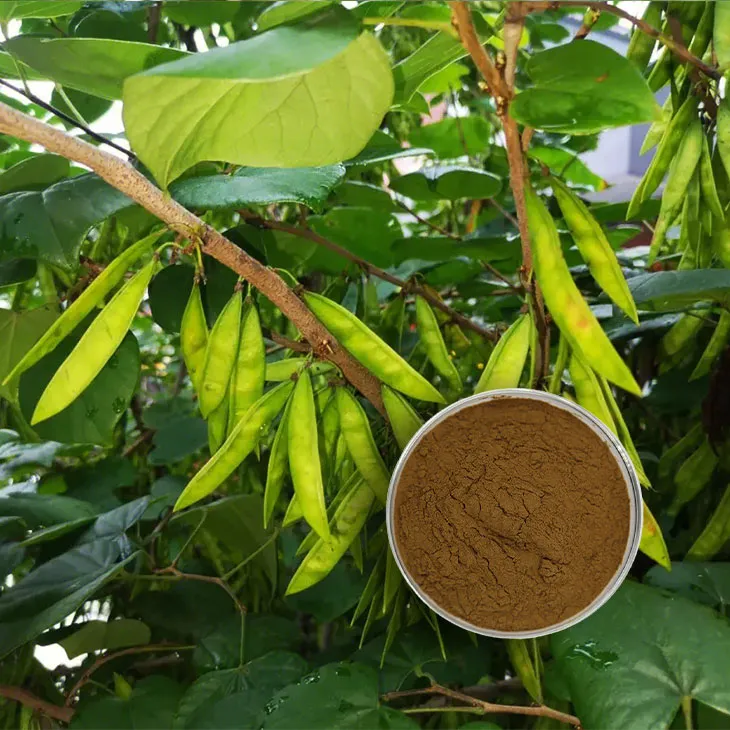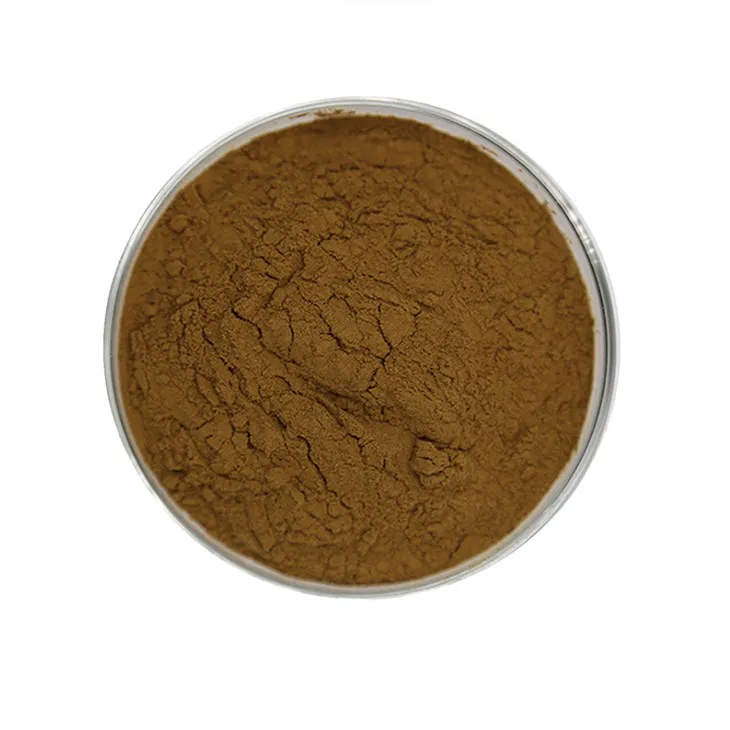- 0086-571-85302990
- sales@greenskybio.com
The best organic saponin extract.
2024-11-28

Introduction
Organic Saponin Extracts have gained significant popularity in various fields due to their potential health benefits and diverse applications. Saponins are a class of natural compounds that are found in many plants. They are known for their surfactant - like properties, which means they can reduce the surface tension of liquids. This property makes them useful in a variety of applications, from skincare to pharmaceuticals.

Sources of high - quality saponin
1. Ginseng
Ginseng is one of the most well - known sources of saponins. The saponins in ginseng are called ginsenosides. These compounds have been the subject of extensive research. Ginsenosides are believed to have adaptogenic properties, which means they can help the body adapt to stress. For example, in times of physical or mental stress, the body's normal functions may be disrupted. Ginsenosides can help to regulate the body's physiological responses, such as the release of stress hormones. This can lead to an enhanced overall well - being. Ginseng has been used in traditional medicine for centuries, and modern research is beginning to uncover the scientific basis for its many claimed benefits.
2. Soapwort plant
The soapwort plant is another important source of saponins. The saponins extracted from soapwort have unique properties that make them suitable for use in natural skincare products. One of the most notable properties is their cleansing and foaming abilities. When used in skincare products, such as soaps or facial cleansers, they can effectively remove dirt and oil from the skin without causing excessive dryness. This is because saponins can interact with the oils on the skin surface in a way that allows them to be easily washed away. Additionally, soapwort saponins are generally considered to be gentle on the skin, making them a popular choice for those with sensitive skin.

Extraction methods and their impact on quality
1. Traditional extraction methods
Traditional extraction methods for saponins have been used for centuries. Two common traditional methods are maceration and percolation.
- Maceration: This involves soaking the plant material containing saponins in a solvent, such as alcohol or water, for a period of time. During this process, the saponins gradually dissolve into the solvent. However, this method can be time - consuming, and it may not be very efficient in extracting all of the saponins from the plant material. Additionally, there is a risk of contamination during the long soaking process.
- Percolation: In percolation, the solvent is slowly passed through the plant material. This can be a more efficient way of extracting saponins compared to maceration, as the solvent is constantly being refreshed. However, like maceration, it may not be able to extract saponins with the highest purity, and there is still a risk of impurity introduction.
2. Modern extraction techniques - Supercritical fluid extraction
Supercritical fluid extraction is a modern technique that has several advantages over traditional methods when it comes to Saponin Extraction.
- It can preserve the integrity of the saponins. Since supercritical fluids have unique properties that are between those of a liquid and a gas, they can interact with the saponin molecules in a way that does not damage them. This means that the extracted saponins retain their natural structure and biological activity.
- Supercritical fluid extraction is more effective at removing impurities. The supercritical fluid can selectively dissolve the saponins while leaving behind many of the unwanted substances in the plant material. This results in a higher - quality extract with a higher purity level.

Applications and their influence on the "best" extract
1. Pharmaceutical industry
In the pharmaceutical industry, the requirements for Saponin Extracts are quite specific. Extracts with high bioactivity and low toxicity are highly desirable for drug development.
- High bioactivity means that the saponin extract can have a significant effect on the body's physiological processes. For example, it may be able to interact with specific receptors in the body or modulate certain biochemical pathways. This is crucial for developing drugs that can treat various diseases, such as cancer or neurodegenerative disorders.
- Low toxicity is also essential, as drugs need to be safe for human consumption. Saponin extracts need to be carefully tested and purified to ensure that they do not cause harmful side effects when used in medications.
2. Cosmetic industry
In the cosmetic industry, different properties are sought after in saponin extracts.
- Extracts that are gentle on the skin are very important. Since cosmetics are applied directly to the skin, any harshness in the ingredients can cause irritation or allergic reactions. Saponin extracts from plants like soapwort are often preferred in this regard.
- Having antioxidant properties is also a plus. Antioxidants can help to protect the skin from damage caused by free radicals. Free radicals are unstable molecules that can cause oxidative stress in the skin, leading to premature aging, wrinkles, and other skin problems. Saponin extracts with antioxidant properties can help to neutralize these free radicals and keep the skin looking healthy.

Conclusion
The concept of the best organic saponin extract is not straightforward. It is not a one - size - fits - all situation. Instead, it depends on the specific requirements of different industries and applications. Whether it is for the pharmaceutical industry, where bioactivity and toxicity are key factors, or the cosmetic industry, with its focus on skin - friendliness and antioxidant properties, the definition of the best saponin extract varies. Additionally, the source of the saponins and the extraction method used also play important roles in determining the quality of the extract. Understanding these factors is crucial for those involved in the research, production, and use of saponin extracts.
FAQ:
What are the common sources of high - quality organic saponin extracts?
Some common sources include ginseng, which contains ginsenosides, and the soapwort plant. Ginseng is known for its adaptogenic properties due to the ginsenosides it contains. The soapwort plant provides saponins that can be used in natural skincare products because of their cleansing and foaming properties.
How does the extraction method influence the quality of organic saponin extract?
The extraction method is crucial. Traditional methods like maceration and percolation have been used for a long time. However, modern techniques such as supercritical fluid extraction have advantages. Supercritical fluid extraction can better preserve the integrity of saponins and more effectively remove impurities, thus leading to a higher - quality extract.
What characteristics make an organic saponin extract suitable for the pharmaceutical industry?
In the pharmaceutical industry, an organic saponin extract should have high bioactivity and low toxicity. These characteristics are highly desirable for drug development as they can ensure the effectiveness and safety of the drugs.
What are the requirements for an organic saponin extract in the cosmetic industry?
In the cosmetic industry, an organic saponin extract that is gentle on the skin and has antioxidant properties is preferred. These properties can help protect the skin and keep it healthy.
Why is the concept of the best organic saponin extract not one - size - fits - all?
The concept is not one - size - fits - all because different industries and applications have different requirements. For example, the pharmaceutical industry focuses on bioactivity and toxicity, while the cosmetic industry emphasizes skin - friendliness and antioxidant properties. The best extract depends on these specific needs.
Related literature
- Saponins: Properties, Applications, and Health Benefits"
- "Organic Saponin Extracts in Modern Medicine"
- "The Role of Saponin - Rich Plants in Skincare"
- ▶ Hesperidin
- ▶ Citrus Bioflavonoids
- ▶ Plant Extract
- ▶ lycopene
- ▶ Diosmin
- ▶ Grape seed extract
- ▶ Sea buckthorn Juice Powder
- ▶ Fruit Juice Powder
- ▶ Hops Extract
- ▶ Artichoke Extract
- ▶ Mushroom extract
- ▶ Astaxanthin
- ▶ Green Tea Extract
- ▶ Curcumin
- ▶ Horse Chestnut Extract
- ▶ Other Product
- ▶ Boswellia Serrata Extract
- ▶ Resveratrol
- ▶ Marigold Extract
- ▶ Grape Leaf Extract
- ▶ New Product
- ▶ Aminolevulinic acid
- ▶ Cranberry Extract
- ▶ Red Yeast Rice
- ▶ Red Wine Extract
-
Fenugreek Extract Powder
2024-11-28
-
Moringa powder
2024-11-28
-
Thunder God Vine Extract
2024-11-28
-
Artichoke Extract
2024-11-28
-
Ginger Extract
2024-11-28
-
Medicinal Marshmallow Extract
2024-11-28
-
White mustard seed extract
2024-11-28
-
Hericium erinaceus extract powder
2024-11-28
-
Acerola Juice Powder
2024-11-28
-
Chaste Berry Extract
2024-11-28





















